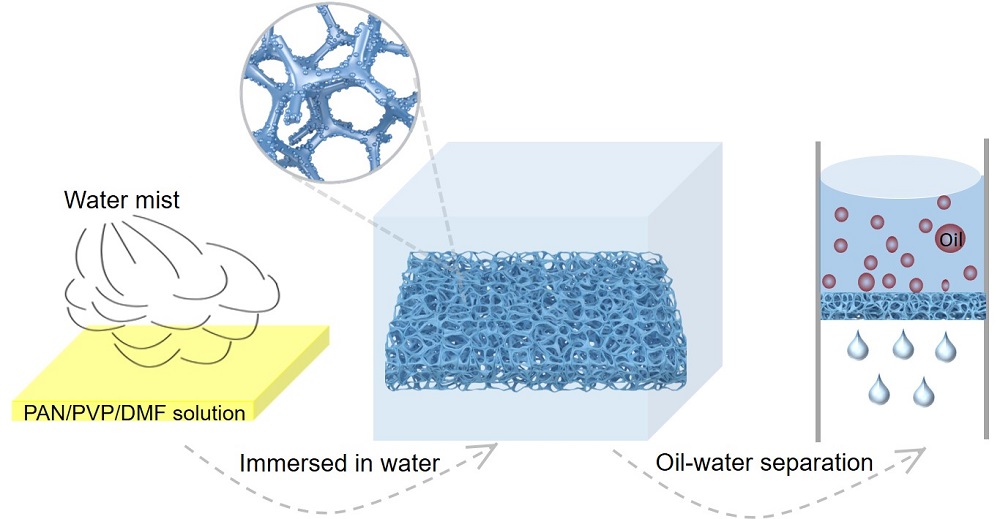Considering the wettability and pore structure of the membrane material comprehensively, the PAN/PVP-30s membrane was selected for oil-water separation test (Fig. 6). The average pore diameter of the membrane is 1.06 μm. (Fig. S5, cf. ESM). As shown in Fig. 6(c), the emulsion separation experiment was carried out in cross-flow mode with a transmembrane pressure of 10 kPa. Dynamic light scattering results show that the oil droplet size ranges from 1 to 10 μm in surfactant-free emulsions, and ranges from several hundred nanometers to 3 μm in surfactant-stabilized emulsions (Fig. S6, cf. ESM). As shown in Fig. 6, the bicontinuous porous structure membrane with micro-nano composite structure can effectively separate different types of emulsions. The TOC values of the relevant emulsions are shown in Table S1 (cf. ESM). For the surfactant-free emulsions, the corresponding fluxes are 3700, 2805, 2149 L·m
–2·h
–1 for hexane/H
2O, diesel/H
2O, soybean oil/H
2O, and the TOC values of the three filtrates after one-time filtration are all lower than 5 mg·L
–1, indicating their separation efficiencies are greater than 99.8%. The oil droplets of surfactant-stabilized emulsions are relatively smaller and more stable, and the surfactant will cause a certain degree of contamination to the surface and pores of the membrane, making the oil/water separation and membrane recycling more difficult [
54]. The separation performance of the membrane to the three surfactant-stabilized emulsions is also shown in Fig. 6. The corresponding fluxes are 2650, 1980, and 1311 L·m
–2·h
–1, and the TOC values in the filtrates are 32.48, 42.19, and 48.54 mg·L
–1, respectively. The surfactant is soluble in water and the TOC value of the filtrate includes the influence of the surfactant passing through the membrane. In order to evaluate its influence on the TOC of the filtrate, 0.1 g·L
–1 SDS solution was passed through the PAN/PVP-30s membrane at 10 kPa, and the TOC of the filtrate was 18.93 mg·L
–1. Therefore, if the influence of SDS is subtracted, the actual TOC of the filtrate will be smaller and the separation efficiency will be better. As shown in Fig. S7 (cf. ESM), the milky white emulsion becomes clear and transparent after being filtered through the membrane. Optical microscope images indicate that tiny droplets of oil have been filtered out. The above results show that the membrane can effectively separate both surfactant-free and surfactant-stabilized emulsions, which proves that the membrane has significant practical value.











